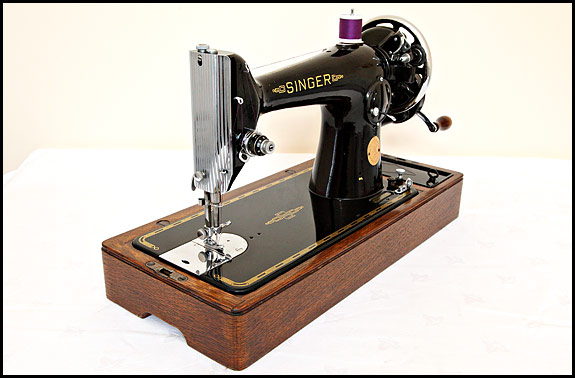I’ve put another classic 201K on the Singers for sale page, and this one’s a little bit different …
This is the 201K3 which until now has been in Elsie’s own collection of portables. It’s the one I’ve been under orders not to mention when people asked if we have a nice 201 electric for sale.
However, we’ve only got a small house, and with 6 different treadle machines in it which I can’t see Elsie ever parting with, it’s finally been decided that the time has come for some of her portables to go to somebody who’ll put them to better use. So this one is now for sale.
It’s a little bit different in that we know its history. The lady I bought from it had recently inherited it from her Mum, who bought it new in 1948. Apparently it was Mum’s pride and joy, and it was taken into the local Singer shop for a service every two years without fail. She made her daughter’s Christening gown on it, and in due course her wedding dress too.
After Mum died, it was passed to her daughter. It was only brought out once, to make a pair of curtains on, then put back in the cupboard. And there it stayed until it followed me home.
It’s been checked over very carefully indeed and oiled, and I’ve stripped and rebuilt the motor, as well as replaced the mains leads. This machine is a really sweet runner, and it has one of the quietest motors we’ve ever come across. Sure it’s got a few superficial bits of pin rash and the odd tiny dink or two, but nothing that stopped Elsie claiming it for her collection as soon as she saw it.
Its “snakeskin” suitcase-type case is a really good one, and we’re including with it all the bits and bobs which came with it when we bought it – original instruction books for the machine and for the motor, oilcan (empty!), a working Singer buttonhole attachment 86662, and a full set of attachments in their card box complete with the list of contents!
Also included is the Singer rubber mat, but I forgot to include that in the pictures …




You must be logged in to post a comment.